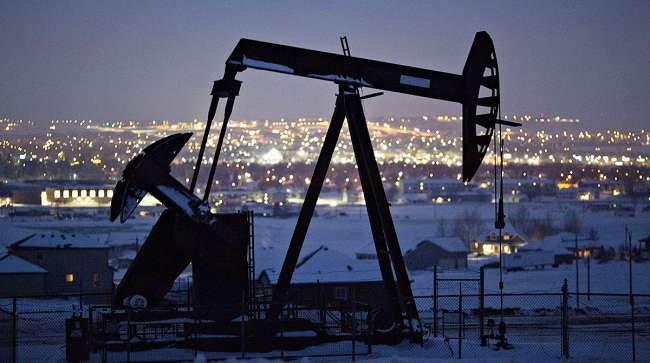Oil prices edged lower on Monday, as investors assessed the latest European sanctions on Russian oil exports, which are expected to have limited near-term impact on global supplies. However, fears of a tighter diesel market helped curb further losses.
Brent crude futures fell by 19 cents, or 0.3%, to $69.09 a barrel by 1:45 p.m. EDT (1745 GMT), while U.S. West Texas Intermediate (WTI) crude declined 11 cents, or 0.2%, to settle at $67.23.
The European Union last week approved its 18th sanctions package against Russia in response to the ongoing war in Ukraine. The package notably included new restrictions targeting India’s Nayara Energy, which refines and exports oil products derived from Russian crude. However, traders remain largely unfazed.
“The market right now thinks that supply will still make it to market in one way, shape or another, there is not too much concern,” said John Kilduff, partner at Again Capital in New York.
The Kremlin, responding to the latest round of sanctions, said on Friday that Russia had developed a degree of immunity to Western restrictions, with spokesperson Dmitry Peskov asserting the country’s ability to withstand continued economic pressure.
Analysts at ING pointed out that the most impactful measure may be the EU’s ban on imports of refined products made from Russian crude in third countries. Still, they warned that implementation could be patchy due to challenges in monitoring and enforcement.
During Monday’s session, losses in crude were tempered by investor focus on diesel supply, which could be disrupted by the new restrictions.
“As the day has gone on, the diesel crack spread started to firm quite a bit, suggesting that the market cannot ignore the fact that any disruptions in Russian oil supply could tighten supplies of diesel, and that seems to be giving us a bit of support today,” said Phil Flynn, senior analyst at Price Futures Group.
Low-sulphur gasoil futures were trading at a $26.58 per barrel premium to Brent crude at the same time, marking a rise of around 4% on the day. If sustained, it would represent the highest closing spread since February 2024.
“We have a bit of room for error on the crude side, barrels can be shuffled around a bit, but it is harder to shuffle around tight supplies of diesel,” Flynn added.
Meanwhile, Iran—another heavily sanctioned oil producer—is set to resume nuclear talks with Britain, France, and Germany in Istanbul on Friday, according to its foreign ministry. The discussions follow warnings from the three European countries that failure to revive the talks could trigger renewed international sanctions.
In the U.S., oil drilling activity has also softened. Baker Hughes reported on Friday that the number of operating oil rigs fell by two to 422 last week, the lowest level since September 2021.
“Oil-focused drilling is expected to remain at subdued levels through the balance of the year,” said StoneX analyst Alex Hodes in a note. “We aren’t anywhere close to prices that merit a significant pullback in investment though,” he added.
Separately, U.S. tariffs on EU imports are set to come into force on August 1, but Commerce Secretary Howard Lutnick expressed optimism on Sunday about securing a trade deal with the bloc. The looming tariffs are viewed as a potential headwind for oil demand and broader economic activity.
Any support for oil prices in the near term may come from upcoming inventory data, particularly if stockpiles show signs of tightening, said Tony Sycamore, market analyst at IG.























